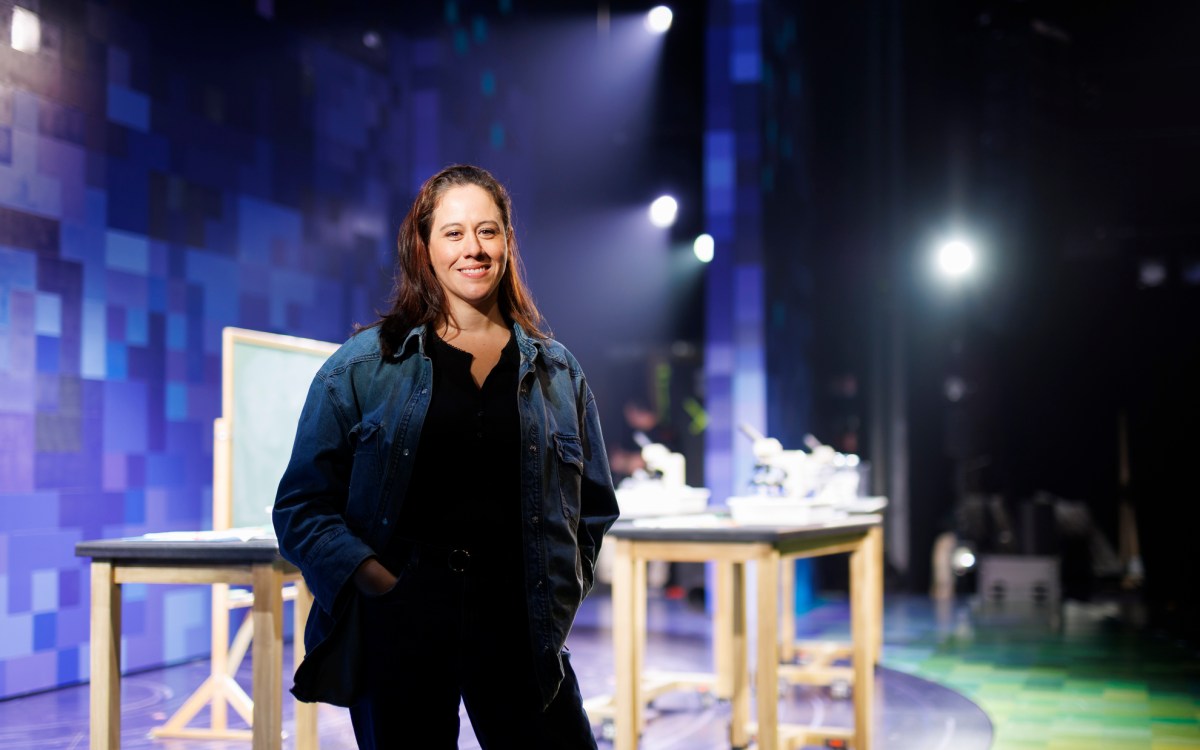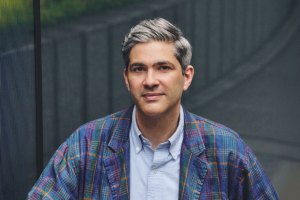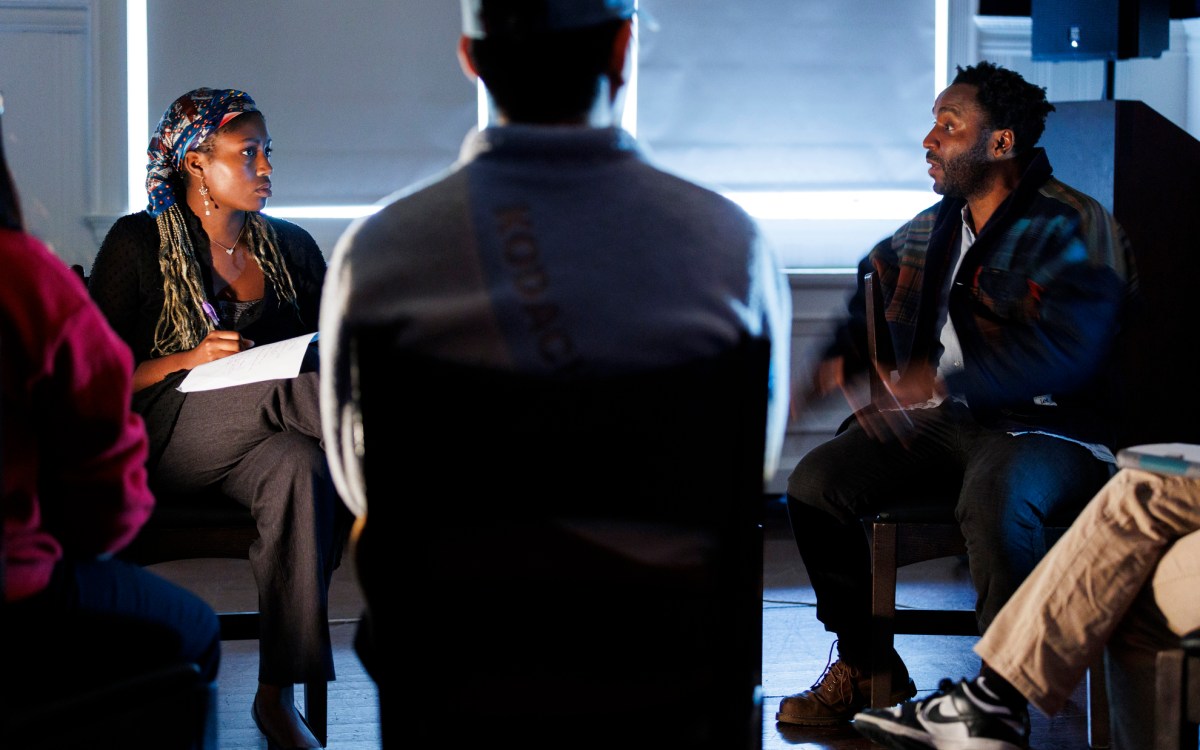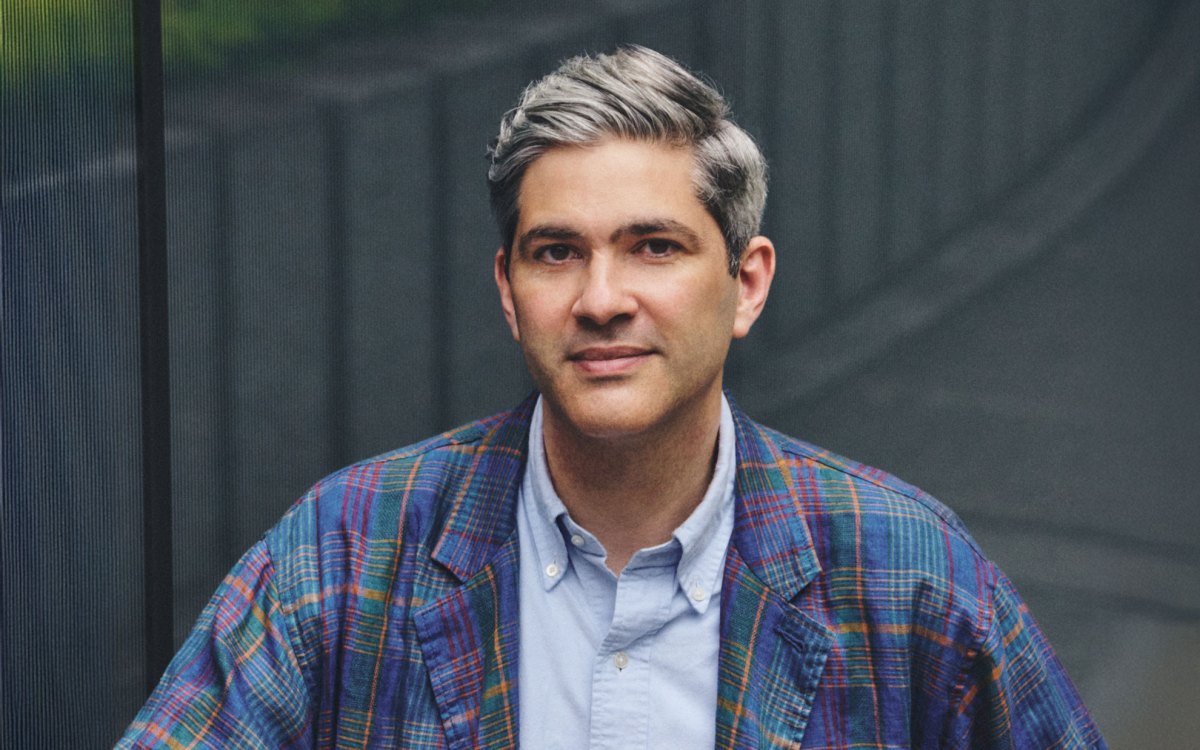Finding new art in unexpected places
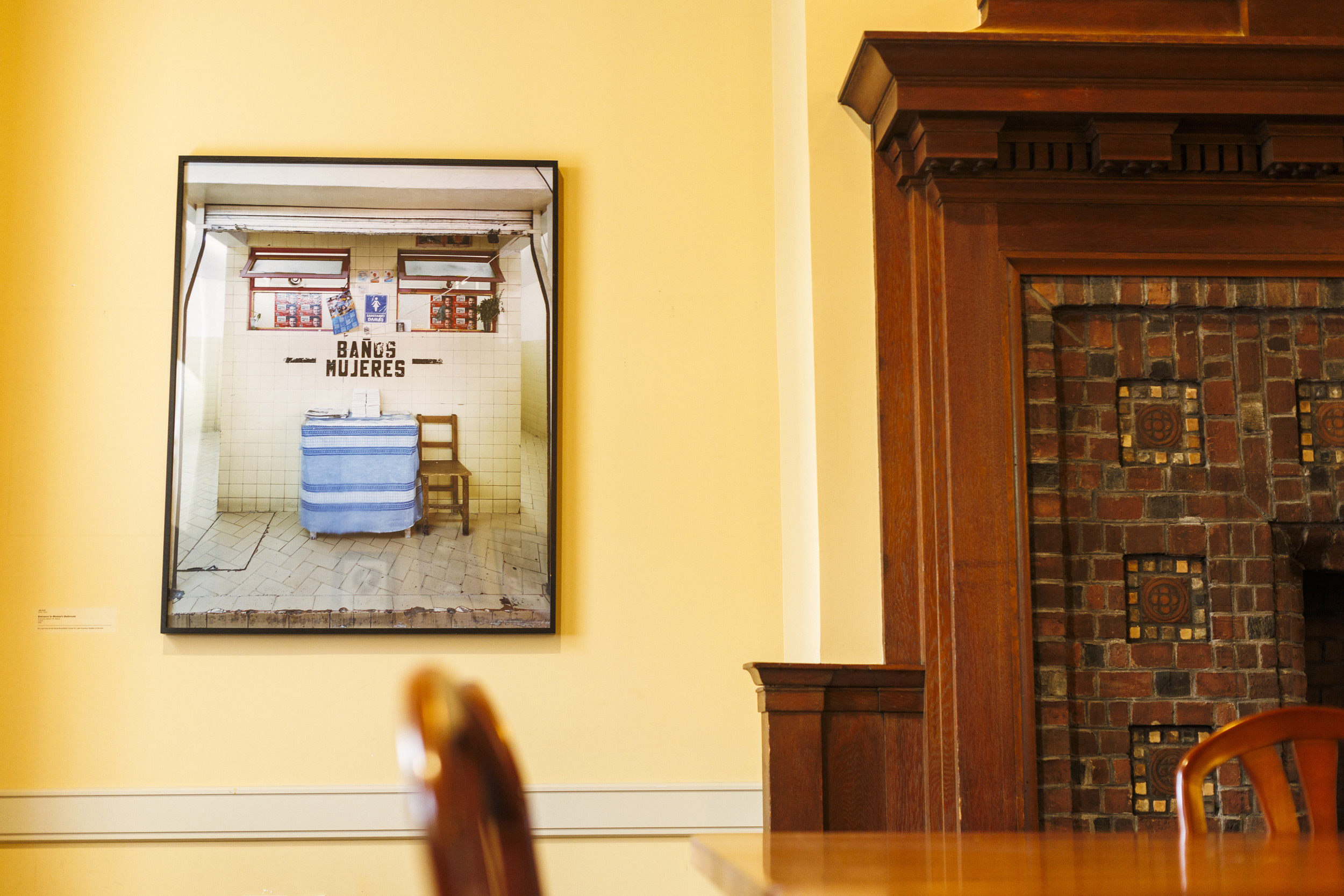
One of the DRCLAS art loans, “Entrance to Women’s Bathroom” by Boston photographer Jim Dow, is on display at the Mahindra Humanities Center.
Photos by Stephanie Mitchell/Harvard Staff Photographer
Rockefeller Center for Latin American Studies loaning pieces from collection to areas around campus to widen exposure, spark reconsideration
The Mahindra Humanities Center’s Plimpton Room — a classic Harvard space with an ornate fireplace, beautiful wood detail, and imposing large table — is now home to two striking photographs of bathrooms in Argentina.
The brightly colored, modern images by Boston photographer Jim Dow stand out amid the muted Colonial Revival design of the room.
“You have those pieces in a very formal room, these two super contemporary pieces showing public bathrooms in Latin America. There’s a contradiction, a very interesting tension in the room now with those pieces,” said Marcela Ramos, arts program manager at the David Rockefeller Center for Latin American Studies, which acquired the pieces following a special exhibition.
The display in Plimpton is part of a three-year art-loan program launched by the DRCLAS in May. A dozen pieces from its collection of Latin American artwork, including sculptures, photos, and paintings, have found new homes across campus, introducing them to new audiences and possibly inspiring viewers to see the works, their new contexts — and themselves — in a fresh light.
“Artwork from Latin America is as rich and vibrant as any,” said Bruno Carvalho, interim director of the Mahindra Center. “Artists working in Latin America draw from local realities as well as traditions far afield.”
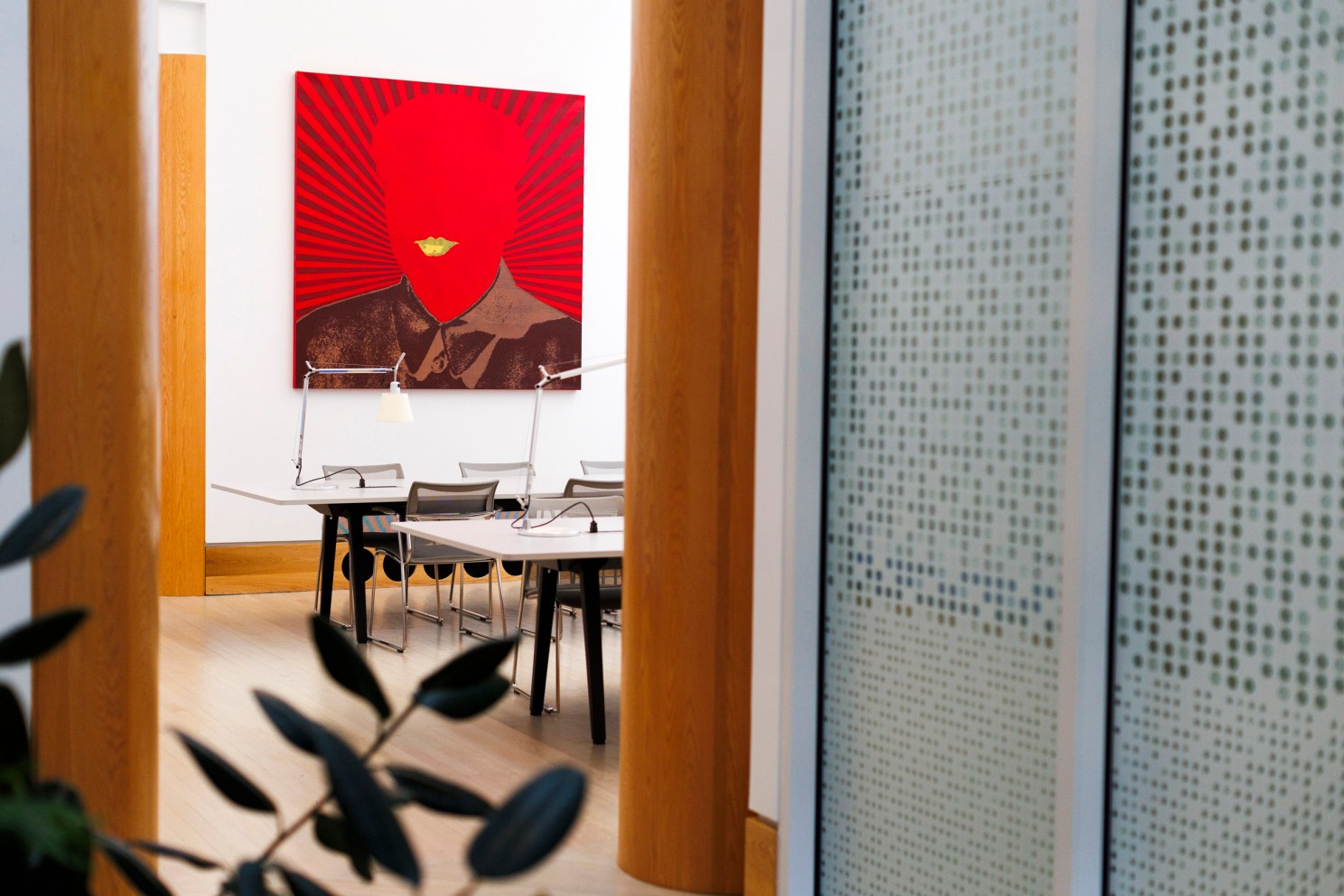
A mixed-media portrait of Mao Zedong by Peruvian artist Alfredo Márquez is featured in the History of Art and Architecture Department.
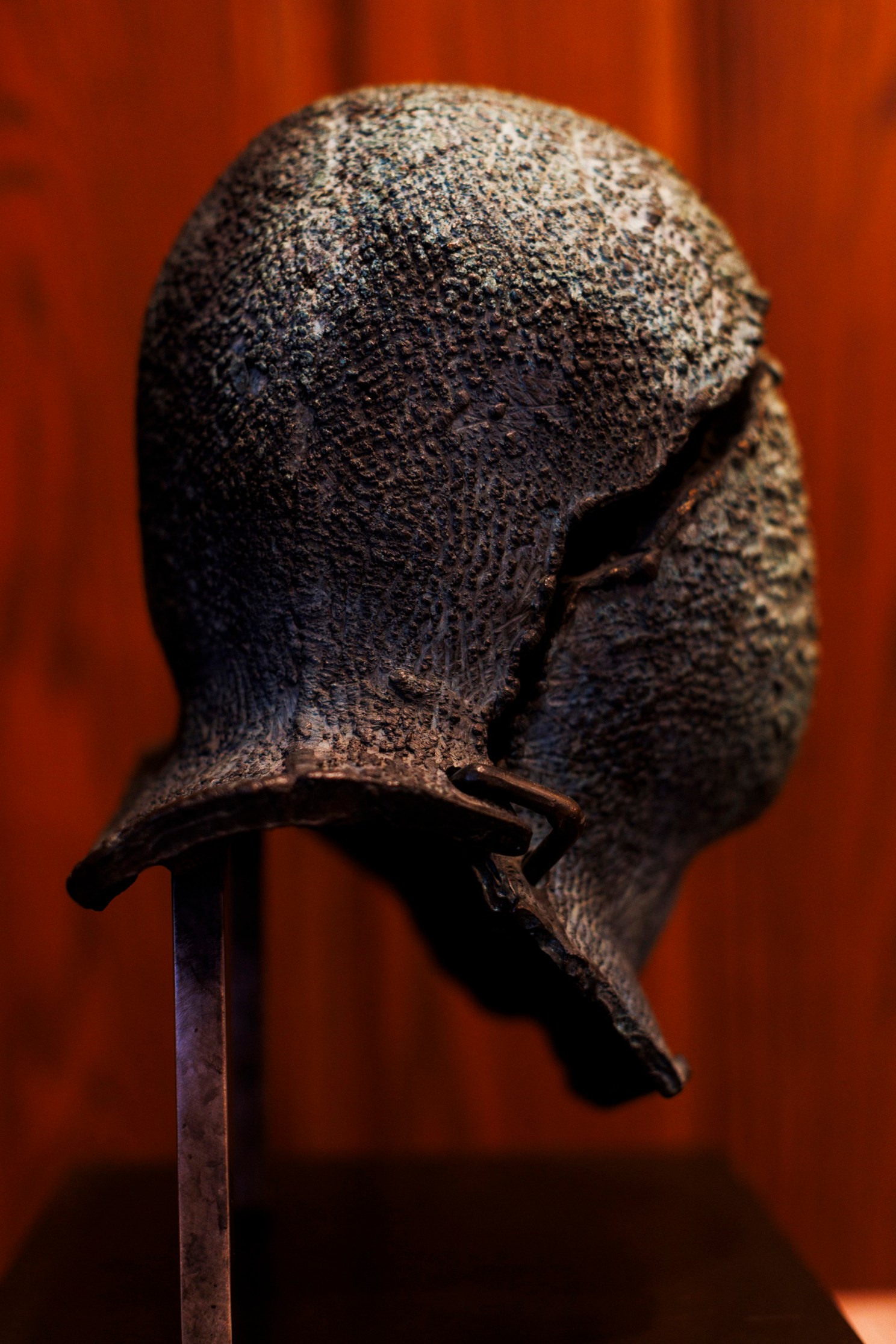
“Cascaron Nº 4” by James Amaral is on display at the Barker Center.
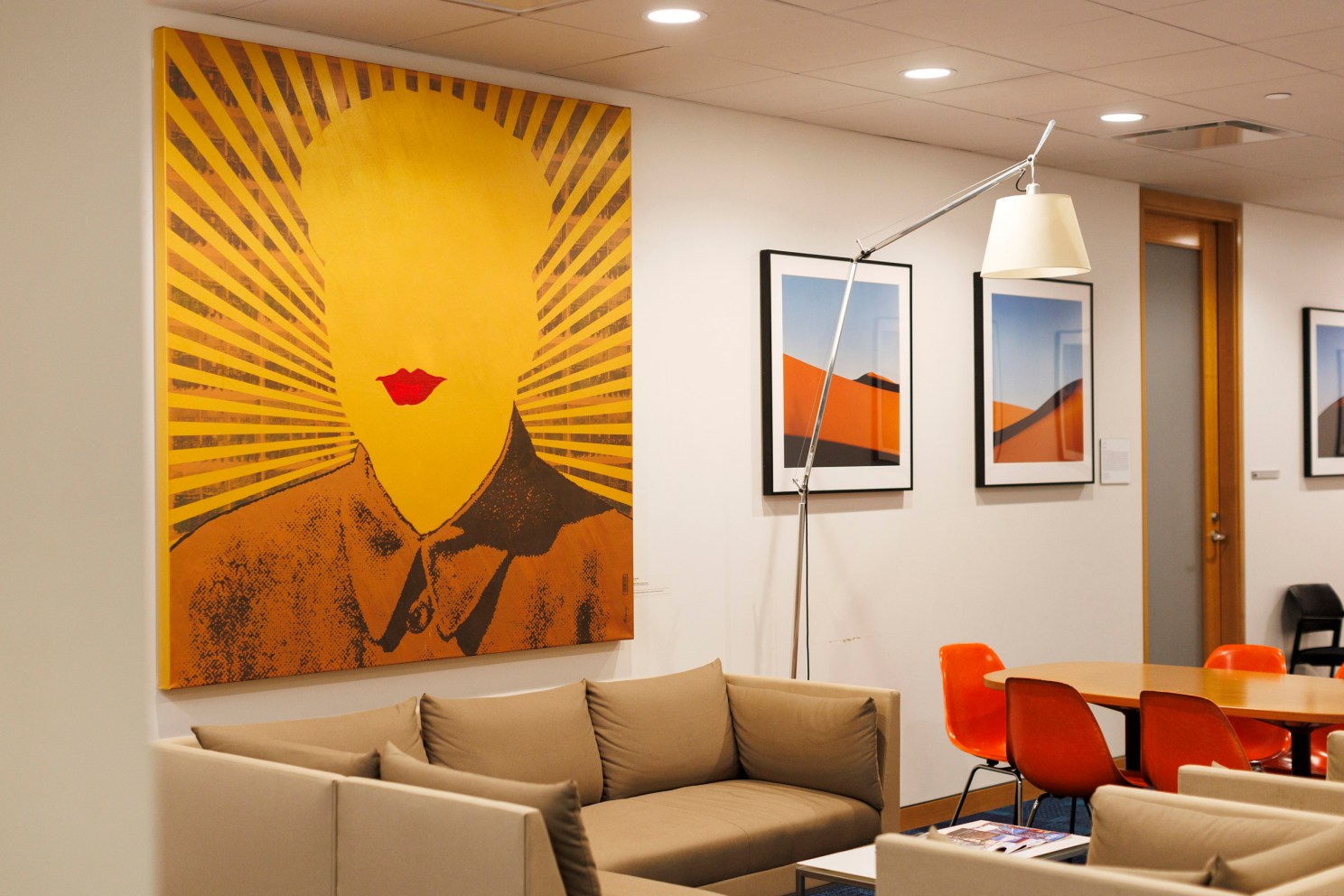
A second portrait of Mao Zedong by Márquez at the Weatherhead Center in CGIS North.
Carvalho and his team at the Mahindra chose four pieces, including a bronze sculpture by California-born Colombian artist James Amaral and the Dow photos.
Other DRCLAS artwork has been loaned to the Weatherhead Center for International Affairs, the faculty offices in the Department of the Classics and the Science Center, Harvard Art Museums, and the History of Art and Architecture Department.
“Loan programs allow art to circulate and to come alive in different spaces, and through interactions with a wide range of people,” Carvalho said.
Ramos said that the inaugural year of the art-loan program aligns perfectly with DRCLAS’ mission to promote the work of Latin American artists, thinkers, and creatives. For years the center amassed artwork from exhibitions, collectors’ donations, and acquisitions. “This was a way of having our permanent collection on view permanently outside [of DRCLAS] and not having it in storage,” Ramos said, noting that similar issues happen at a bigger scale at museums.
The collection includes Peruvian Fernando de Szyszlo’s mixed media “Mesa Ritual,” Chilean Mario Navarro’s Chromogenic print “Engine,” Mexican American Jesus Leuus’ acrylic “La Familia,” and other Latin American artists. While this is the first time the center is loaning a significant portion of its artwork, it previously donated 14 pieces to the Harvard Art Museums.
Three mixed-media portraits of Mao Zedong by Peruvian artist Alfredo Márquez are reminders of both the power and danger during periods of authoritarian rule.
Márquez was sentenced to 20 years in prison during the administration of President Alberto Fujimori in the 1990s after creating a silk-screen pop print of the Chinese communist dictator. Fujimori, who was locked in an armed conflict with the Maoist Shining Path insurgents, dissolved congress and took over the judiciary to consolidate authority against opposition.
Márquez was pardoned in 1998 after serving three years in jail. His artwork now hangs in the Weatherhead and the History of Art and Architecture Department.
“I hope the art makes people slow down, perhaps noticing something they hadn’t seen, or enabling their minds to wander in unforeseen directions,” Carvalho said. In addition to loaning the art, DRCLAS will also include QR codes that will take visitors to a website highlighting the center’s programming.
Ramos hopes that the loan program will allow wider audiences to appreciate Latin American art, while also encouraging other centers to do the same. “I would love to be somewhere on campus and see works from another center, so there’s a multicultural exchange through the arts,” she said.
